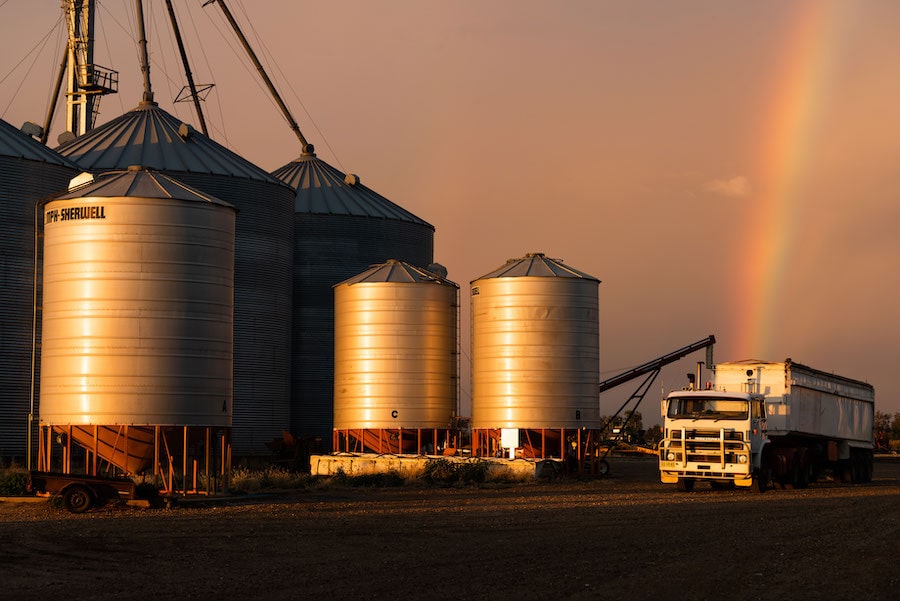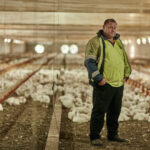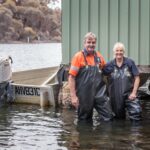Chooks have been a part of Phil Partridge�s life since the day he was born…
Can we (and should we) make more stuff here?
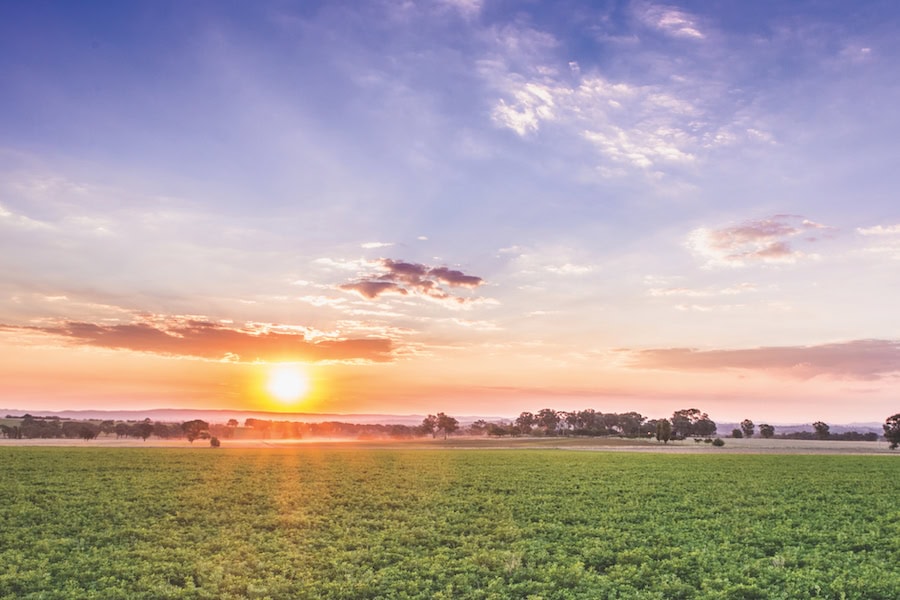
Early this year, when COVID-19 panic buying stripped supermarket shelves of staples like pasta and red meat for the first time in living memory, it was a rude wake-up all for all Australians. Despite being a net food exporter � three-quarters of our agricultural produce is sent overseas � this country is a net importer of six major food categories � seafood, processed food fruit and vegetables, soft drinks, oil and fats, bakery products and confectionery. So should we make more stuff in Australia?
Figures from the Australian Bureau of Agricultural and Resource Economics show food imports to Australia increased 4.8 per cent per annum over the past 30 years, while a focus on mining and services-led growth has concurrently gutted the country’s manufacturing capacity. More than 200,000 manufacturing jobs have been lost since 2008 and �the rate of job loss is accelerating�, according to the Australian Institute.
This has sparked calls for Australia to rebuild its weakened manufacturing base to bolster food security and fuel the post-pandemic recovery in regional areas. �Crawling out from this dangerous era of primary commodities dependence is more urgent than ever,� says Alison Pennington, senior economist at the Australian Institute.
Financial consultancy Deloitte argues �COVID-19 has clearly exposed some of the supply chain weaknesses in a globalised world and there are opportunities for transformation and growth.�
Niall Blair, a professor of food sustainability at Charles Sturt University, believes there is an opportunity to export more processed food to Asia. �There are enough people with enough disposable income there for us to be able to make a lot of money out of our higher quality, clean and green, value-added food and fibre products,� he said.
But is the call for self-sufficiency a bunch of hot air or misplaced nationalistic sentiment from a bygone age? Does private industry have the ability, and does our government have a real desire, to retool this country in the image of food and fibre manufacturing powerhouses like Brazil, Italy or Japan?
Anti-manufacturing policy
Since the crisis began in March, Federal Agriculture Minister David Littleproud has repeatedly stressed food-processing facilities are essential services that needed to stay open. But the Minister is wary of talk of bringing back food manufacturing jobs, saying the focus should instead be on �new jobs in innovation and science�.
The Guardian argues Australian lawmakers have pushed an aggressively anti-manufacturing agenda for decades. Much evidence exists to support the claim. As recently as April, lobbying by NSW Farmers for some of the state’s $140 million Bushfire Industry and Recovery Package to be invested in manufacturing failed to yield results. �Rebuilding is important, but let�s also look at a stimulus for new investment in regional food and fibre processing,� NSW Farmers President James Jackson said at the time.
Executive director of the Australian Farm Institute Richard Heath told Fairfax newspapers there was little potential for more food manufacturing until the government brought in �very different� policies.
�We’d have to add some sort of economic stimulus or export and import restrictions to create a competitive processing sector,� Heath said.
Floyd Legge, a sheep farmer in the central-west of the state and fibre manufacturer who made his wedding suit from scratch with wool from his own sheep, says in addition to government regulation, the main disincentives for more manufacturing in Australia are high energy and labour costs.
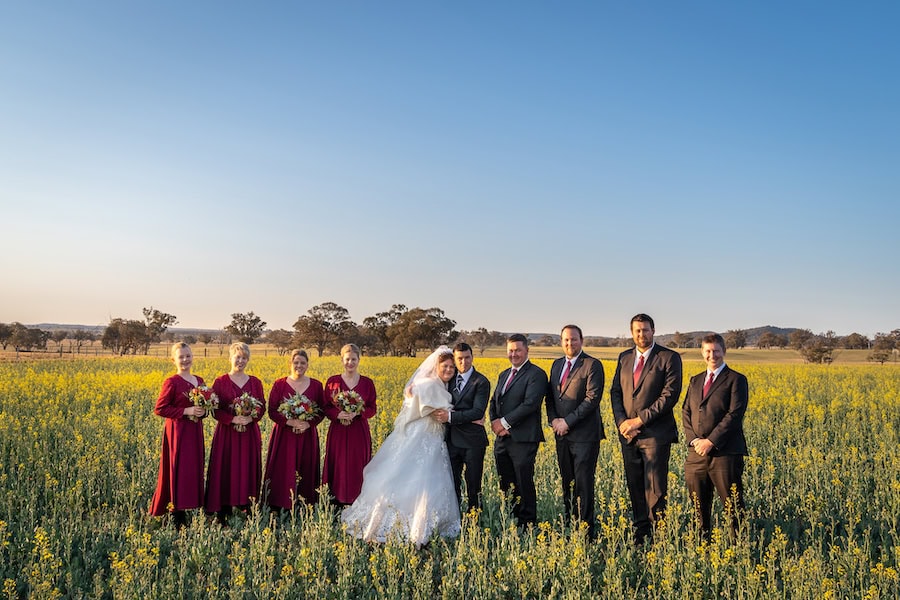
�If we want to make anything here, something has to be done about these things or Australia will continue to lose its competitive advantage to countries that don’t have such high labour costs,� Legge says.
�I’m certainly not advocating a reduction in wages to the level of the Third World. But one could argue it’s quite unfair we still operate in a highly regulated employment market when all our products have been deregulated in the wisdom of fair trade.�
Agriculture in the middle
Adjunct professor Warwick Powell, an economist at Queensland University of Technology, says Australia’s high labour costs are not necessarily an impediment to boosting our manufacturing base.
�People often have an idea in their mind of factories full of workers. But modern manufacturing is not labour-intensive. It is heavily mechanised for better quality control and to reduce costs,� he says.

Powell also believes the days of ever-increasing energy costs in Australia are over. �We have gone through the hard years of rising costs,� he says. �Very soon, returns on investments in green energy will make running a factory cheaper.
�One of the things that might come out of the crisis and this demand for more manufacturing,� he continues, �is what is called ‘agriculture in the middle’ � something in between massive-scale production and the village economy � a medium where new technologies make production easier.�
James Jackson reckons ‘micro-manufacturing’ that builds on the concept of micro-breweries and which are supported by government grants are the answer for the bush.
�Endless opportunities exist for the establishment of small-scale processing plants close to growers to extend product freshness and shelf-life and support market expansion,� he says. �Take for example how nearly every town in rural NSW has a little brewery or gin distillery today. It is extraordinary how quickly they have been able to set up these businesses and disrupt the alcohol market.�
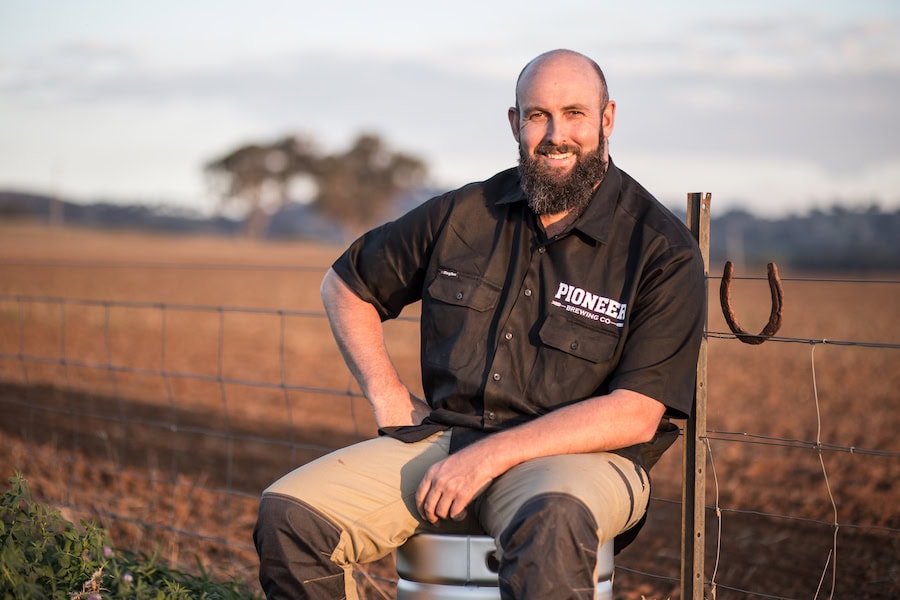
However Peter Glerber of Pioneer Brewing Co. near Orange says government grants for small manufacturing businesses remain a pipe dream in Australia. �Right now there is effectively no support from the government,� he says. �You need to turn over $1.5 million per year to apply for most of these grants but it’s not the large corporate businesses that need them. It’s the small mum and dad businesses that need support if we want to change the way food is produced in this country.�
The supermarket duopoly
The strongest disincentive for more food and fibre manufacturing in Australia according to sources interviewed for this story is the supermarket duopoly.
�Apart from the high cost of labour, the biggest disincentive to manufacturing in this country is our competition laws that have allowed two supermarket chains to take 70 per cent of market share,� James says.
�As a small manufacturer you have no leverage � you are a ‘price taker’ � and they trim the bottom line. This is why we have this huge number of commodities exported rather than elaborate manufacturing of our own products.�
Doug Cush, owner of Bellata Gold (a mill producing durum, semolina and flour in Tamworth) concurs. �We cannot compete against a factory overseas that pays its staff $2 an hour and either way that’s not something we should aspire to. �But the bigger problem,� he argues, are Woolworths and Coles.
�We supply raw materials to a major pasta maker in Melbourne and the second their products leave their factory and go to the supermarkets, the price of production doubles. If the whole supply chain can produce a packet of pasta for $2 but the supermarkets sell it for $4, then that’s clearly where the problem lies,� he says.
�In America, they have laws that prevent retailers from marking up anything produced by the food industry by more than 20 per cent. That’s why they have such a vibrant food manufacturing base over there. Even with our high cost of labour, food doesn’t have to be more expensive in this country than it already is if we produce it here. But nothing will change in this country until government steps in and breaks up the duopoly.�
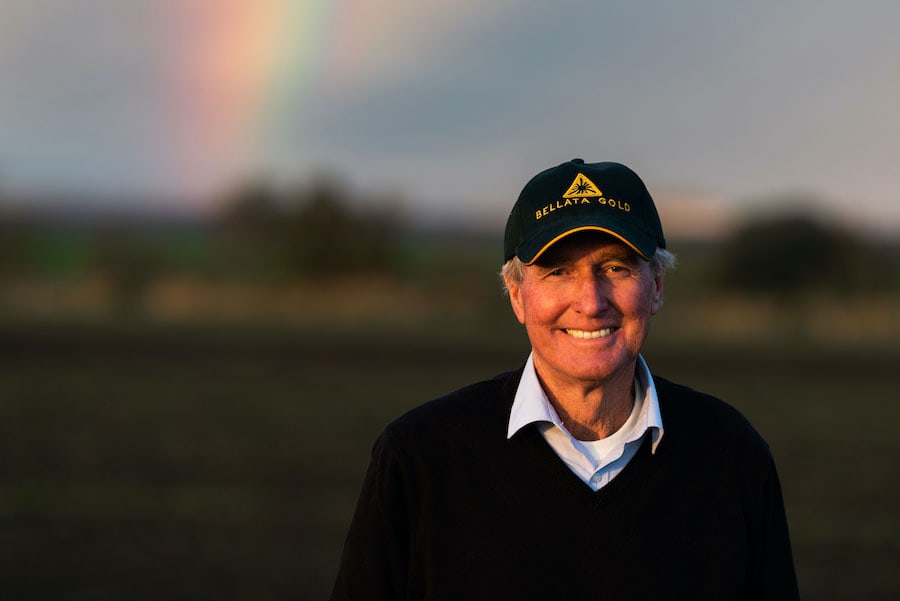
There is however a way around the duopoly that has gained much traction in recent months because of the brief but long-lasting images of empty supermarket shelves in March: farmgate sales.
�There are thousands of farmers who are doing it,� says James. �They are shortening supply chains by selling directly to the consumer. It’s a very good solution.�
Win-Win
Beyond the disincentives and opportunities for more food and fibre in this country is the over-riding question of consumer choice. Without new laws to break the supermarket duopoly, do grocery shoppers in this country have the stomach for higher prices?
�The problem with self-sufficiency is not a free proposition. It comes at a cost and someone is going to have to finance these things,� Professor Powell argues. �We have to be sure the business case sticks and historically, this kind of sentimentality has to been supported by consumers in Australia. We can look at our failed car-making industry for an example.�
Powell breaks the problem down a step further yet, asking if food security in Australia is even remotely a problem.
�If you look at what happened with panic buying, people simply brought forward their consumption by three weeks. Instead of buying one item, they bought five or ten,� he says. �So now they say we need more factories. But that’s not something you can do in a few months. To make it work, you need supply chains, you need continuity of inputs and a place to sell the products.
�We need to take a very sobering view,� he continues, �to make sure we don’t inadvertently commit to fighting yesterday’s battles. We need sustainable manufacturing businesses, not white elephants. It’s not black and white.�
James at NSW Farmers agrees. �The cost of labour, regulatory impediments, competition law, the high cost of capital � all these things will put a brake on the idea,� he says. �What we are anticipating instead is a slow and sustained increase in micro-manufacturing, especially in rural areas. By being innovative and leveraging our core strength � the world-class integrity of our produce � we can create more opportunities for farm diversification, create rural jobs and enhance food security. It’s a win-win,� he says.
Case Study 1: From Australia to Italy
Durum is a strain of wheat used to make pasta, and the Golden Durum Triangle in north-central NSW is said to produce the best durum in the world � renowned for its high protein level, consistent gluten quantity and rich golden colour.
Farmers in the triangle typically sell their unprocessed durum to pasta makers in Australia and Italy. There, they mill the grain into semolina to make top-quality pasta for European consumers as well cheap pasta blended with bread flour for Australia and other export markets.
�We are just a dumping ground for surplus processed food from other countries, most of which is not the same quality as we make this country,� says Cush � a grain farmer in the golden triangle since 1975.
The dilemma convinced Cush to make a batch of pasta with his durum and enter it in the Fine Food Show in Sydney, where it won numerous prizes. �It had a natural flavour that’s so good you can eat it on its own with just a sprinkle of parmesan,� he says. �But the dry pasta sold in supermarkets, you have to put a sauce on it.�
Cush also took his pasta to Italy for taste-testing. �I met an old lady there, a pasta maker�s grandmother who said she hadn’t tasted pasta that good since she was a little girl,� he says.
Buoyed by the positive feedback, Cush imported in a computerised durum mill from Italy in 2006 and started making high-quality durum semolina through his company Bellata Gold Milling. He even patented the product’s name: Duralina.
�When we started milling, it was just our own grain,� says Cush. �Now we use other growers but they’re all from the same so we have full traceability. Many high-end restaurants and fresh pasta makers in Australia use only our Duralina.�
Belatta Gold Miling now exports Duralina to pasta makers in Italy as well as dumpling makers in Asia. Last year the company sent 120 containers abroad.
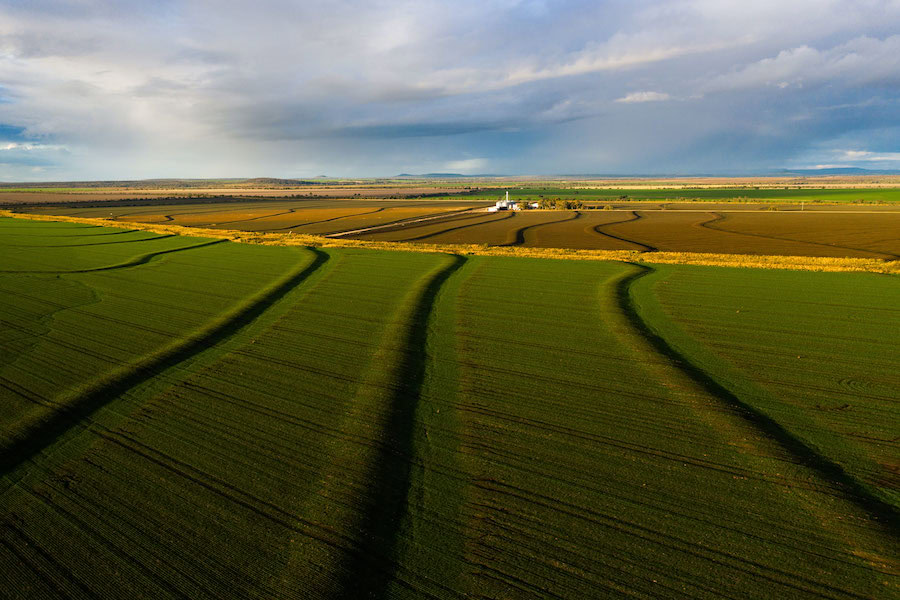
Case Study 2: From Shearing to Suit
It’s not unusual for couples to spend six months or longer planning their wedding. But Floyd Legge, a sheep and cattle farmer in Cudal in central-west NSW, spent six months making a suit for his wedding day using wool he sheared off one of his own sheep.
Legge, whose family has produced merino wool in the region for more than a century, says the project was inspired by a desire to gain greater understanding of the wool supply chain after it leaves the farm, and to measure the feasibility of turning the project into a profitable micro-manufacturing business.
�The idea was to wear my own wool on my wedding day. But I also wanted to do some market research about the value proposition for people buying tailor-made suits that are fully-traceable from the farm to the end product,� Legge says. �I see it as an opportunity to add value to our business and the domestic wool industry, and to help retain the technical expertise of wool processing in Australia because it’s being forgotten.�
The project was successful. Legge wore his suit on his wedding day. And every step, except for spinning the wool, was carried out in Australia.
However, the project is yet to translate into a viable business concept. �Right now with the crisis, people are not holding many weddings or buying suits for business meetings, so it’s put on my ability to market the concept on hold,� he says.
�Even before the crisis, it was very difficult to manufacture in Australia because there are so many processes and steps wool has to go through until it becomes a finished product. I’m not saying there are less of these steps overseas but the cost of doing business is significantly lower in Asia.�
Case Study 3: From Grain to Glass
There are more than 700 craft breweries in this country, according to the Australian Craft Beer Brewery List. But Pioneer Brewing Co. west of Orange is the only one on the eastern mainland that grows its own malting grains � brewing and packaging the finished product on site. Infused with ingredients like vanilla, coffee, chocolate as well as rainwater harvested on the farm, Pioneer Brewing Co beers have a cult following in the region.
�Orange has become quite a prominent food and wine region but it only ever had one brewery and you couldn’t visit it,� says Peter Glerber. �In December 2017, we opened a brewery on a farm you could visit and our unique ‘grain to glass’ selling proposition. Consumers today are looking for provenance and a story they can buy into and we can identify where the exact batch of barely used to make their beer came from. And because we use rainwater, our beer has no fluoride aftertaste.�
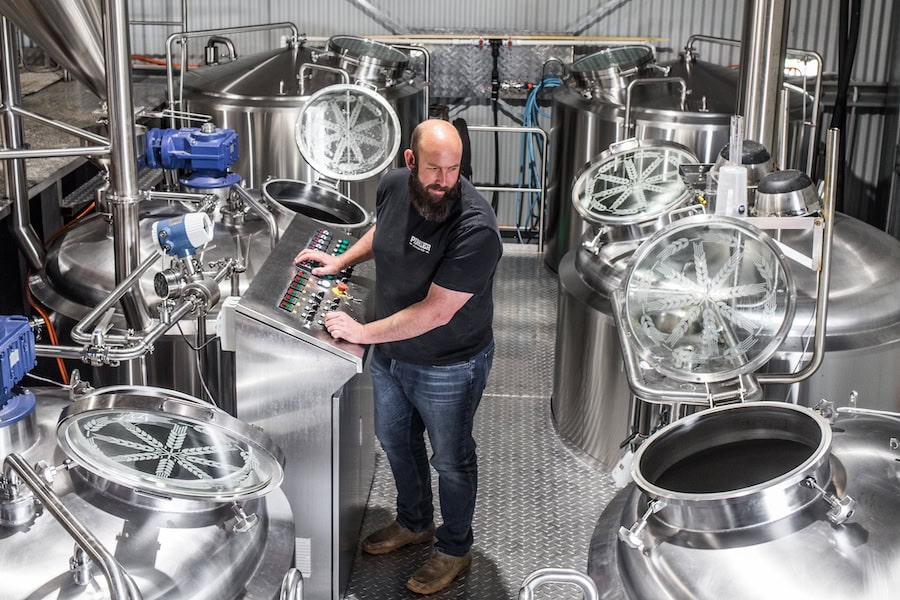
Pioneer Brewing Co. does not sell beer in bottles but in cans. �Cans have a longer shelf life, sustain less damage, are lighter to freight and we can get more cases on a palet. Plus they’re fully recyclable,� Glerber says.
The biggest obstacle Glerber and his wife Tamara faced launching the business was finance. �We’d done our market research, both had professional success in business, but the banks are super cautious and decided we were not worth the risk,� he says. �So we had to cough up a 30 per cent deposit and do everything on a shoestring budget.
�My advice to anyone wanting to go into manufacturing in Australia is that it will not be an easy journey,� he says. �Lots of doors are going to close and you’re going to meet a lot of naysayers. But if you’re determined, if you refuse to take no for an answer, you’ll find ways to do it as we did.�
